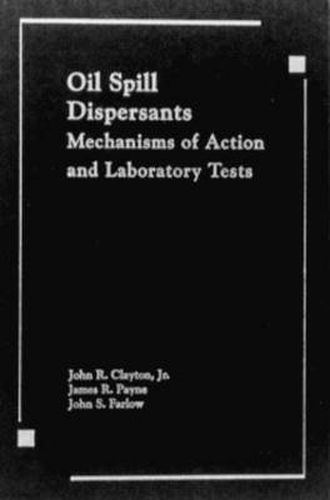Readings Newsletter
Become a Readings Member to make your shopping experience even easier.
Sign in or sign up for free!
You’re not far away from qualifying for FREE standard shipping within Australia
You’ve qualified for FREE standard shipping within Australia
The cart is loading…






Oil Spill Dispersants provides a comprehensive summary of current information regarding the general formulation of commercial dispersants and their function to lower oil-water interfacial tension. The book considers how chemical dispersants work for oil spills, the properties and chemistry of oils, the variables that effect dispersant performance, and the relationships between laboratory methods and field situations. The book also considers the strengths and limitations of specific laboratory tests, including brief discussions of the applicability of results for estimating dispersant performance in field trials or conditions encountered during real spill events. Laboratory tests are separated into four groups: tank tests, shake/flask tests, interfacial surface tension tests and flume tests. Rapid-screen field tests are considered as a separate group. Recommendations for improvements in future laboratory testing are offered as well.
$9.00 standard shipping within Australia
FREE standard shipping within Australia for orders over $100.00
Express & International shipping calculated at checkout
Oil Spill Dispersants provides a comprehensive summary of current information regarding the general formulation of commercial dispersants and their function to lower oil-water interfacial tension. The book considers how chemical dispersants work for oil spills, the properties and chemistry of oils, the variables that effect dispersant performance, and the relationships between laboratory methods and field situations. The book also considers the strengths and limitations of specific laboratory tests, including brief discussions of the applicability of results for estimating dispersant performance in field trials or conditions encountered during real spill events. Laboratory tests are separated into four groups: tank tests, shake/flask tests, interfacial surface tension tests and flume tests. Rapid-screen field tests are considered as a separate group. Recommendations for improvements in future laboratory testing are offered as well.